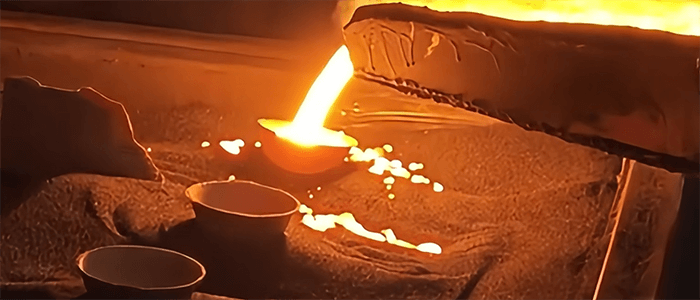Introduction:
The world of metal casting is a nuanced realm where precision and expertise intersect. Central to this domain are two pivotal elements: runners and risers. Understanding the nuances between these components is essential for optimizing casting processes. In this comprehensive exploration, we delve into the multifaceted disparities between a runner and a riser in metal casting, illuminating their distinctive roles and impact on casting operations.
Material Flow Dynamics:
Runners, the gating systems, are the conduits that guide molten metal from the ladle to the mold cavity, ensuring a smooth and uniform flow throughout the casting process. In contrast, riser sleeves (feeders) act as reservoirs, supplying additional molten metal to compensate for solidification shrinkage and maintain casting integrity. While runners focus on facilitating material flow, risers are dedicated to preserving the structural integrity of the casting.

Location and Placement:
The strategic placement of runners and risers within the casting setup is crucial for their effective operation. Runners are typically positioned at the entry points of the mold cavity to facilitate the controlled distribution of molten metal. On the other hand, risers are strategically placed to receive excess molten metal and provide a supplementary feed to the casting as it solidifies. The precise location of these components influences the overall quality and integrity of the final cast product.
Defect Mitigation Strategies:
Runners play a pivotal role in preventing defects such as misruns and cold shuts by ensuring the complete filling of the mold cavity with molten metal. In contrast, risers are instrumental in minimizing shrinkage-related defects like porosity and shrinkage cavities by supplying additional material to compensate for volume reductions during solidification. The distinct defect mitigation strategies employed by runners and risers highlight their specialized functions in enhancing casting quality.
Optimization and Efficiency:
Efficient design and utilization of runners and risers are essential for optimizing casting processes and achieving high-quality castings. Runners are engineered to enhance material flow and distribution, maximizing efficiency and minimizing casting defects. In comparison, risers are meticulously sized and located to provide a consistent feed of molten metal, ensuring the structural integrity and quality of the final casting. The synergistic operation of these components is instrumental in driving efficiency and excellence in metal casting operations.
Conclusion:
In conclusion, the nuanced disparities between runners and risers underscore their unique roles and contributions to metal casting processes. By comprehensively understanding these divergent elements, foundries can optimize their casting operations, minimize defects, and elevate the quality of their cast products. The strategic integration of well-designed runners and risers is essential for achieving precision, consistency, and excellence in the intricate art of metal casting.

